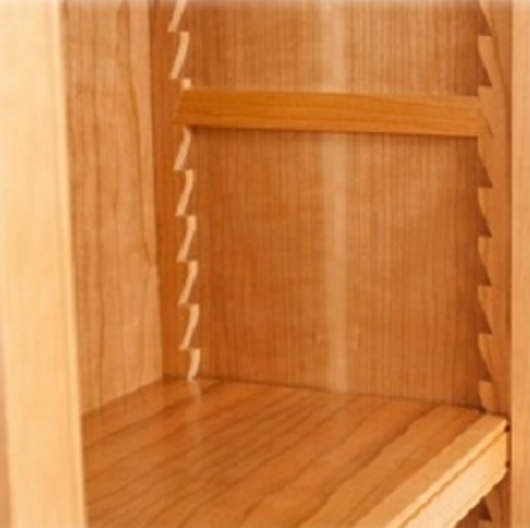Been quiet on this for a while so thought I'd provide an update.
Couldn't find a cheap source of oak for the verticals so ended up going to a local mill and paid the going rate for some narrow 25mm (finished thickness) boards which I have now jointed in threes to give the depths that I wanted.
Have now also prepared, jointed and roughly cut all the old flooring (for the shelves and trims). Based on the sizes I have managed to recover from the old oak boards I am now able to draw up the plans for the bookcase in detail.
The oak is now stacked indoors acclimatising. It was originally all kiln dried - how long should I leave it before cutting to final sizes please?

Order of assembly is going to be interesting. The shelves are set behind the front edge of the verticals by a couple of cms and so I was planning to use blind dados. The shelves are also vertically aligned so can only get a hidden fixing in from one side. Needs to be assembled in situ and even one section will need assistance to move carefully into place.
Current thoughts are to build a two jigs that will each support a complete set of shelves. Starting at one end, using one of the jigs, assemble a vertical and a set of shelves(screwed and glued) and fit into place on the base. Using the second jig assemble the next vertical and set of shelves(screwed and glued), bring the two sections together, glue and temporarily clamp (but can only clamp at front edge). Repeat for remaining sections, ideally try to complete whole assembly in one shot so I can take advantage of the bookcase being between two masonry walls and wedge the frame at each shelf level to hold the glue joints tight along their full length. I'll need a glue with a very long open time!
Other suggestions welcome ...
Couldn't find a cheap source of oak for the verticals so ended up going to a local mill and paid the going rate for some narrow 25mm (finished thickness) boards which I have now jointed in threes to give the depths that I wanted.
Have now also prepared, jointed and roughly cut all the old flooring (for the shelves and trims). Based on the sizes I have managed to recover from the old oak boards I am now able to draw up the plans for the bookcase in detail.
The oak is now stacked indoors acclimatising. It was originally all kiln dried - how long should I leave it before cutting to final sizes please?

Order of assembly is going to be interesting. The shelves are set behind the front edge of the verticals by a couple of cms and so I was planning to use blind dados. The shelves are also vertically aligned so can only get a hidden fixing in from one side. Needs to be assembled in situ and even one section will need assistance to move carefully into place.
Current thoughts are to build a two jigs that will each support a complete set of shelves. Starting at one end, using one of the jigs, assemble a vertical and a set of shelves(screwed and glued) and fit into place on the base. Using the second jig assemble the next vertical and set of shelves(screwed and glued), bring the two sections together, glue and temporarily clamp (but can only clamp at front edge). Repeat for remaining sections, ideally try to complete whole assembly in one shot so I can take advantage of the bookcase being between two masonry walls and wedge the frame at each shelf level to hold the glue joints tight along their full length. I'll need a glue with a very long open time!
Other suggestions welcome ...




































